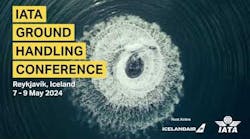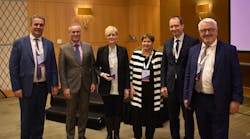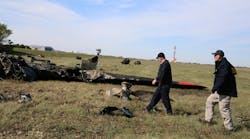Washington, DC, Feb. 6, 2015 – The National Business Association (NBAA) today joined with seven aviation groups in urging the Federal Aviation Administration (FAA) to continue its fact- and science-based approach in addressing aircraft noise issues. In a letter to FAA Administrator Michael Huerta, the groups also applauded the FAA for resisting calls to impose noise restrictions that are not based on sound research or existing protocols.
“We write to express our appreciation for the fact- and science-based approach FAA takes in addressing aircraft noise and for your resolve in staying the course,” said the letter’s authors, which included Airlines for America, Air Line Pilots Association, Aerospace Industries Association, Cargo Airline Association, General Aviation Manufacturers Association, NBAA, National Air Carrier Association and the Regional Airline Association.
“Airlines, other aircraft operators, airframe and aircraft engine manufacturers, and FAA have dramatically reduced the number of people exposed to aircraft noise,” the letter continued. “Even so, we understand that concerns remain and may be heightened when changes in air traffic procedures, such as those occasioned by the transition to the Next Generation Air Transportation System (NextGen), are introduced. It is critical to NextGen implementation that FAA continue to employ science-based noise metrics and thresholds in assessing policy responses to those concerns.”
The aviation groups also pointed to the progress made over the last several decades in working with the FAA and other agencies to reduce aircraft noise.
“Indeed, the number of people exposed to significant levels of aircraft noise in the United States has dropped by 95 percent since the late 1970s, even as enplanements have tripled,” the groups wrote. “And reduction of noise at the aircraft source is expected to continue, with the International Civil Aviation Organization adoption of more stringent ‘Chapter 14’ aircraft noise standards.”
The letter added that this progress could be hampered by ad-hoc attempts to address noise complaints.
“We are troubled by recent calls for FAA to fiat in new noise metrics and thresholds without basis or to otherwise reverse appropriately adopted advanced performance-based navigation flight procedures, such as those recently deployed at Phoenix Sky Harbor International Airport,” the groups said. “The Aviation Safety and Noise Abatement Act of 1979 (ASNA) established a science-based approach to assessing and addressing noise exposure. This makes sense. While appreciating that any particular person experiencing aircraft sound may have a negative experience, the National Airspace System cannot function on a non-scientific or case-by-case basis.”
The writers added that the existing 65 decibel day-night average sound level threshold and noise assessment procedures established under ASNA are supported by existing science and, “appropriately map the subjective experience of noise into a system that can be applied on an objective basis.”
In closing, the writers said they support FAA’s resolve and Huerta’s personal dedication to continuing with this process.
“Our industry remains committed to working with aviation officials and the public at large in addressing aircraft noise issues through ongoing, fact-based research,” said Christa Fornarotto, NBAA vice president of government affairs. “We applaud the FAA and Administrator Huerta for their commitment to this process.”




